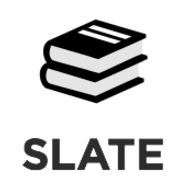Slatejs 如何使一个特定的节点不可编辑?
在SlateJS中,可以通过定义自定义的 `Editable` 组件或者通过设置节点的 `readOnly` 属性来使一个特定的节点不可编辑。但是,需要注意的是,在 SlateJS 中,并没有直接在节点上设置 `readOnly` 的属性,相反,我们通过使用编辑器的 `isReadOnly` 属性来控制是否可以编辑。
为了对特定的节点设置不可编辑状态,通常会在渲染过程中使用一个自定义的 `Element` 或 `Leaf` 渲染组件,并在该组件内部决定如何处理可编辑状态。下面是一个实现的基本方法:
首先,你需要创建自定义渲染组件来处理不同类型的节点,例如:
```jsx
import { useSlateStatic, ReactEditor } from 'slate-react';
import { Transforms } from 'slate';
const CustomElement = props => {
const editor = useSlateStatic();
const { attributes, children, element } = props;
// 你可以根据element的特定属性来判断该节点是否应该不可编辑
const readOnly = element.type === 'read-only';
// 当尝试对这个节点进行编辑时,阻止编辑行为
const preventDefault = (event) => {
if (readOnly) {
event.preventDefault();
}
};
// 使用你的自定义属性来渲染组件
return (
<div {...attributes} onDrop={preventDefault} onDragStart={preventDefault} onClick={preventDefault}>
{readOnly ? <div contentEditable={false}>{children}</div> : children}
</div>
);
};
```
在上面的例子中,如果节点的 `type` 属性为 `'read-only'`,则该节点会被渲染为不可编辑的。
接着,你需要在 SlateJS 编辑器的渲染函数中使用这个自定义的 `CustomElement` 组件来渲染节点:
```jsx
import { Slate, Editable } from 'slate-react';
import { createEditor } from 'slate';
const MyEditorComponent = () => {
const editor = createEditor();
// ... Slate editor setup and state
return (
<Slate editor={editor} value={editorState} onChange={setEditorState}>
<Editable
renderElement={props => <CustomElement {...props} />}
// ... 其他 props
/>
</Slate>
);
};
```
这样,当渲染节点时,会使用 `CustomElement` 来判断节点是否可编辑,并相应地渲染为可编辑或只读。
请注意,SlateJS 是一个高度灵活的框架,以上方法是其中一种实现方式,根据实际需求,你可能需要对这个基本的例子进行调整和扩展。
阅读 74 · 2024年6月27日 12:14

